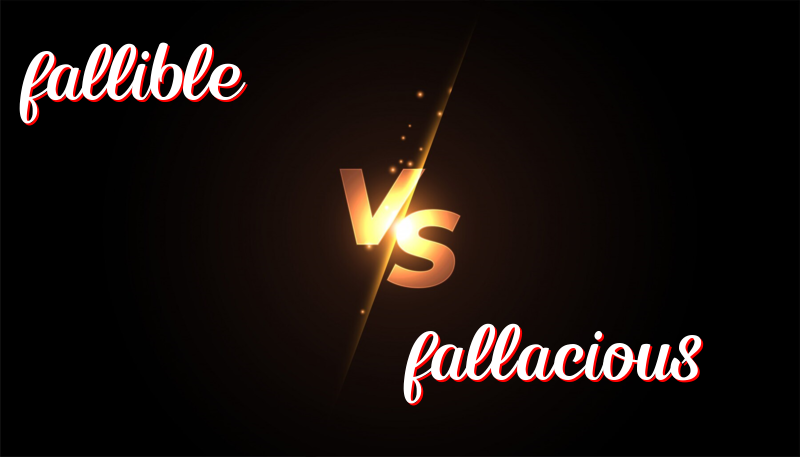Understanding Fallible and Fallacious
Understanding the Difference Between “Fallible” and “Fallacious”
Sometimes, words can look or sound the same, but mean different things. Today, we will learn about two such words: “fallible” and “fallacious”. Let’s see what they mean, how to use them, and a trick to remember the difference.
Word History
Fallible: This word comes from the Latin word “fallibilis”, which means “liable to err”. It means that someone or something can make mistakes.
Fallacious: This word comes from the Latin word “fallacia”, which means “deception”. It is used to describe something that is misleading or false.
How to Use “Fallible”
“Fallible” is used to say that someone can make mistakes or is not perfect.
- All humans are fallible; nobody is perfect.
- A fallible teacher can sometimes give the wrong answer.
- The fallible computer made an error in the calculation.
- Even experts are fallible and can get things wrong.
- He admitted being fallible after making a mistake.
How to Use “Fallacious”
“Fallacious” is used when something is false or misleading.
- His argument was fallacious because it was based on lies.
- It is fallacious to believe that money brings true happiness.
- Don’t be fooled by fallacious ideas that sound convincing.
- Her fallacious reasoning confused everyone in the room.
- The fallacious advertisement made people buy the useless product.
Trick to Remember the Difference
Remember this: “Fallible” has the word “able” in it. If someone is “able” to make mistakes, they are fallible. “Fallacious” sounds like “false”, so it means something that is not true.
Summary
Fallible: Means capable of making mistakes.
Example: Humans are fallible.
Fallacious: Means something false or misleading.
Example: His argument was fallacious.
Now you know the difference between these two words. Keep practicing so you can use them well!

Leave a Reply
You must be logged in to post a comment.